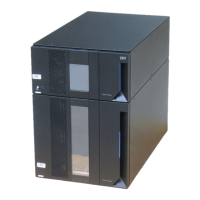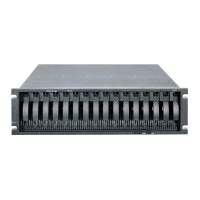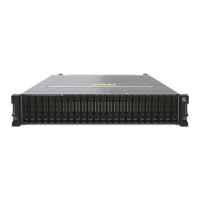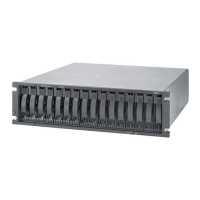Chapter 2. Introduction to IBM Flex System V7000 Storage Node 57
The IBM Flex System V7000 Storage Node consists of a set of drive enclosures. Control
enclosures contain disk drives and two control canisters and form an I/O group for its
management of additional internal and external storage. Expansion enclosures contain drives
and are attached to control enclosures.
The simplest use of the IBM Flex System V7000 Storage Node is as a traditional RAID
subsystem. The internal drives are configured into RAID arrays and virtual disks created from
those arrays.
The IBM Flex System V7000 Storage Node can also be used to virtualize other storage
controllers. An example of it is described in Chapter 7, “Storage Migration Wizard” on
page 265.
The IBM Flex System V7000 Storage Node supports regular and solid-state drives. It can use
IBM System Storage Easy Tier to automatically place volume hot spots on better-performing
storage.
2.5.1 Hosts
A host system is an IBM Flex System compute node that is connected to IBM Flex System
V7000 Storage Node through a Fibre Channel connection or through an Ethernet connection
using either iSCSI or Fibre Channel over Ethernet (FCoE) connection through the switch
modules of the IBM Flex System. At the time of writing, attachment of external hosts to the
IBM Flex System V7000 Storage Node is not supported.
Hosts are defined to IBM Flex System V7000 Storage Node by identifying their worldwide port
names (WWPNs) for Fibre Channel hosts. For iSCSI hosts, they are identified by using their
iSCSI names. The iSCSI names can either be iSCSI qualified names (IQNs) or extended
unique identifiers (EUIs).
2.5.2 Control canisters
IBM Flex System V7000 Storage Node can have two to eight hardware components called
control canisters that provide the virtualization of internal and external volumes, and cache
and copy services (Remote Copy) functions. Within an IBM Flex System V7000 Storage
Node a pair of the control canisters are housed within a control enclosure. A clustered system
consists of a one to four control enclosures.
One of the control canisters within the system is known as the configuration node and it is the
canister that manages configuration activity for the clustered system. If this canister fails, the
system nominates another canister to become the configuration node. During initial setup, the
system will automatically select a canister for this role from the first control enclosure pair.
2.5.3 I/O groups
Within the IBM Flex System V7000 Storage Node, there can be one to four control enclosures
that also are defined as
I/O groups. The IBM Flex System V7000 Storage Node supports four
control enclosures in the clustered system, which provides four I/O groups.
Tip: Even though no external switches are required, the appropriate internal switch I/O
modules must be available in order for the necessary host interfacing to work.
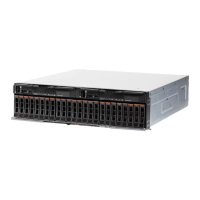
